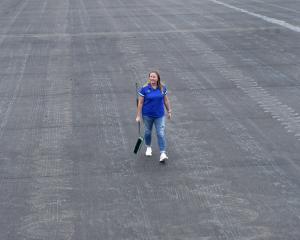Those and other forecast figures that show no let-up in the ongoing increase in tourist numbers mean the new buzzword for the industry is ''sustainability'' rather than growth.
At the Trenz event in Dunedin yesterday, both Tourism Industry Aotearoa (TIA) chief executive Chris Roberts and Eileen Basher of the Ministry of Business, Innovation and Employment trotted out some eye-watering figures.
Ms Basher presented tourism forecasts for the next six years which showed visitor arrivals could reach 5.1 million by 2024, intersecting with the projected population increase.
By the same year, the international tourism spend was forecast to reach $14.8 billion, up almost 40%.
China, which had an increasing number of families and older visitors travelling, was expected to become New Zealand's largest tourism market by spend by 2024.
Mr Roberts said tourism was the country's largest export earner, bringing in 21% of the total.
There were just under 400,000 people employed directly or indirectly in the industry.
All the increases in tourism were a global phenomenon, driven by the growth of middle classes around the world.
''It's the middle classes that can afford international travel.''
But Mr Roberts said while growth was good, it had a price in the likes of everything from airport congestion to traffic and environmental concerns.
Sustainability needed to be part of the industry, growing value rather than volume.
''We don't do tourism for the hell of it, we do it to bring economic prosperity to our communities.''
Asked about concerns about tourism numbers, Mr Roberts said talk of increased numbers was a forecast, not a target, and was not something the industry was trying to achieve.
Instead, the TIA was focused on getting value from visitors, not just for the industry but for the country as well.
That was why the industry was talking about sustainability.
He said it was important to look after the environment, as that was what the country's tourism product was built on.
''We need to deliver for our host communities, we need to be delivering for our communities.''
One way to do that was to try to disperse numbers from tourism hotspots to the regions, and attracting visitors in off-season months rather than the busier times.












